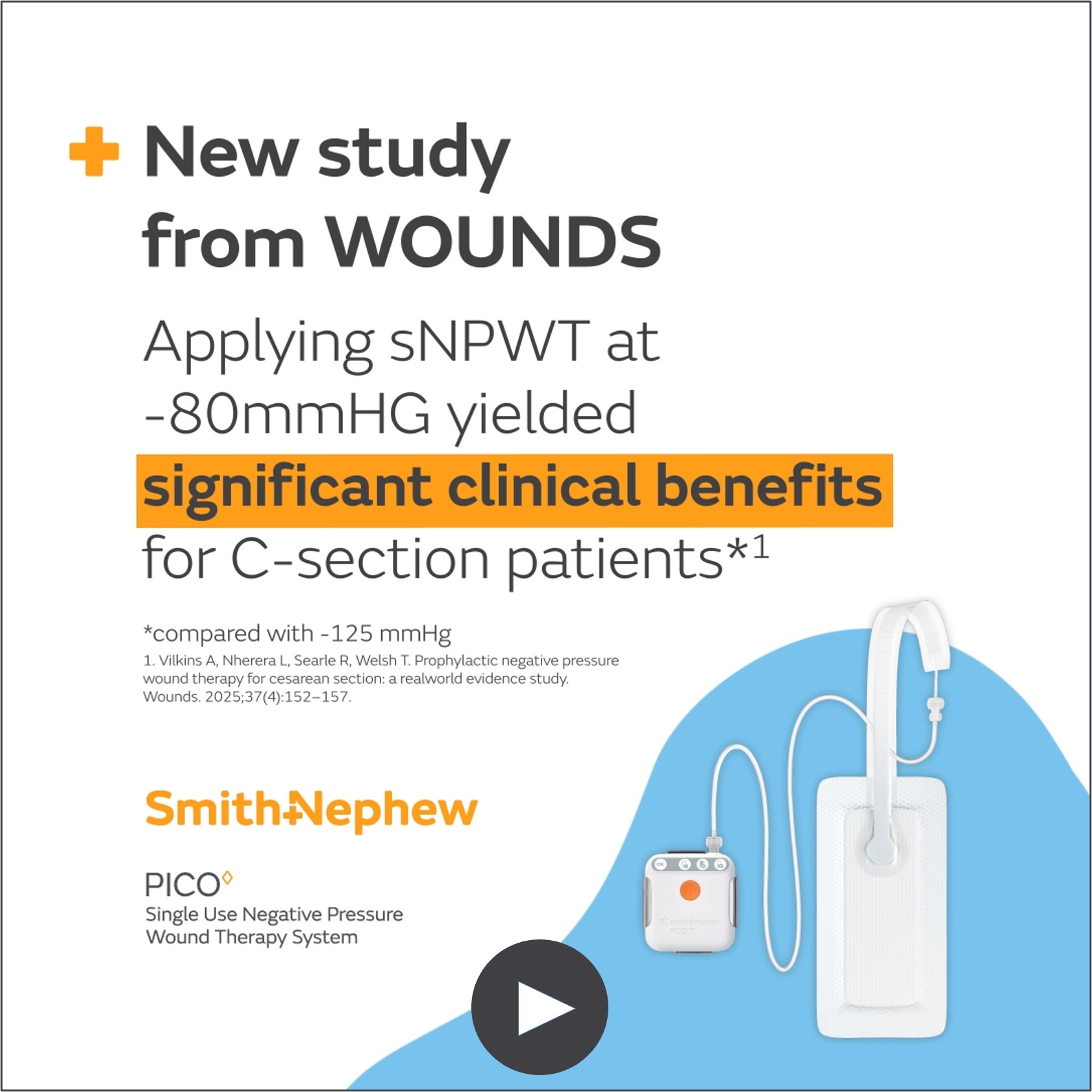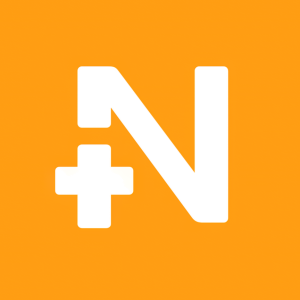A comparative sNPWT study of 10,000+ C-sections shows PICO™ sNPWT reduces complications and cuts healthcare costs by $728,000 per 1,000 patients
Rhea-AI Summary
Positive
- Significant reduction in surgical site complications (SSIs, wound dehiscence, seroma) compared to other devices
- Cost savings of $728,220 per 1,000 patients using PICO sNPWT
- 3.8% lower mean index admission costs compared to other sNPWT devices
- Large-scale study validation with over 10,000 patients
Negative
- None.
Insights
Smith+Nephew's PICO sNPWT shows superior clinical outcomes and $728K cost savings per 1000 C-section patients versus competitors.
This large-scale comparative study of over 10,000 C-section patients represents a significant competitive advantage for Smith+Nephew in the growing surgical wound care market. The data demonstrates that PICO sNPWT statistically outperforms competing single-use negative pressure wound therapy devices across multiple critical metrics, including reduced surgical site infections, wound dehiscence, and seroma formation (p≤0.05).
The $728,220 cost savings per 1,000 patients and 3.8% lower mean index admission costs provide compelling economic justification for healthcare systems to adopt PICO over alternatives. This is particularly important in the current healthcare environment where value-based care and cost containment are priorities.
The addressable market is substantial - 32% of US births are C-sections, with 44.6% considered high-risk. With obesity rates continuing to rise (increasing SSI risk by 2-7x), the need for effective wound management solutions in this population will likely grow.
Beyond the financial case, the study addresses the significant psychosocial impact of complications, including 5x higher rates of traumatic recovery and 5.4x higher inability to breastfeed. This human element strengthens the value proposition beyond pure economics.
The robust real-world evidence from the Premier PINC AI™ Healthcare Database adds credibility to these findings, representing diverse healthcare settings. Publication in a peer-reviewed journal (WOUNDS) further validates the scientific rigor.
This study positions PICO as the premium choice in a critical clinical application, creating differentiation in the competitive sNPWT market and potentially driving market share gains in both obstetrics and broader surgical applications.
The economic impact revealed in this study is compelling from multiple perspectives. The $728,220 savings per 1,000 patients represents a substantial cost advantage over competing technologies in the single-use NPWT market. When scaled to the approximately 1.2 million C-sections performed annually in the US, this suggests potential system-wide savings approaching $874 million if PICO were universally adopted.
The 3.8% reduction in index admission costs (p<0.001) indicates immediate financial benefits, not just theoretical long-term savings. This immediate ROI is critical for hospital financial decision-makers with constrained budgets.
Beyond direct costs, the study captures broader economic consequences of complications. Surgical site infections alone contribute over $900 million annually to healthcare costs. The economic burden extends further when factoring in readmissions, extended care needs, and productivity losses for new mothers.
The study design using real-world evidence from diverse healthcare settings enhances the economic generalizability of these findings. By drawing from community hospitals, teaching institutions, and different healthcare systems, the results suggest the economic benefits would translate across varied settings.
From a market perspective, this creates a compelling value proposition that could drive significant adoption. With approximately 44.6% of C-sections classified as high-risk, there's a substantial addressable segment where the cost-benefit ratio would be most favorable.
The combination of statistically significant clinical improvements and quantifiable cost savings positions PICO favorably in formulary decisions and contracting discussions, potentially driving share gains in this lucrative segment of wound care.
Smith+Nephew (LSE:SN, NYSE:SNN), the global medical technology company, today announces findings from a newly published comparative study of single-use Negative Pressure Wound Therapy (sNPWT) devices in Caesarean section (C-section) recovery has identified significant benefits for postpartum use of Smith+Nephew’s leading PICO sNPWT technology. Analyzing real-world data from over 10,000 C-section patients treated at different pressure levels, the study published in WOUNDS (April 2025) reveals that PICO sNPWT contributes to a significant reduction in surgical site complications (SSCs), including a reduction in the incidence of surgical site infections (SSIs), wound dehiscence and seroma, and overall costs, compared to another sNPWT device (P≤0.05).1
New survey: The real-life burden of C-section complications
A complementary survey of new mothers who have undergone C-sections highlighted the impact of SSCs on both mother and baby:2
- Mothers with complications reported requiring hospital readmissions
- Are 5 times more likely to describe their recovery as traumatic
- Over half (
55% ) reported feeling depressed than those that reported no complications - Are 5.4 times more likely to be unable to breastfeed
- Two in three mothers (
66.3% ) reported that their overall c-section recovery impacted their ability to bond with their baby
Dr. Tia Welsh, M.D. Chair of Obstetrics and Gynecology at Valley Medical Group and co-author of the study added, “Postpartum is already a very vulnerable period for mothers, even without complications. SSCs add physical pain, prolonged recoveries, emotional distress, and disrupt critical early bonding with newborns. These interruptions carry emotional and practical burdens, increasing the risks of postpartum depression, anxiety, and trauma – costs that can’t be captured in dollars alone.”
Real-world data shows the clinical and economic benefits of using PICO sNPWT in patients undergoing C-section procedures
The study used real-world evidence from the Premier PINC AI™ Healthcare Database to analyze outcomes from a geographically diverse mix of community hospitals, teaching hospitals and healthcare systems across the US.
Notable findings include significant reductions with PICO sNPWT, compared to other sNPWT devices in the incidence of*:
- Overall SSIs (p=0.018)
- Superficial SSIs (p=0.017)
- Wound dehiscence (p=0.005)
- Seroma formation(p=0.050)
“We’ve long understood the benefits of NPWT in surgical recovery, but this is the first large-scale study to directly compare different pressure levels in a real-world setting,” said Dr. Annmarie Vilkins, DO. Director of Obstetrics and Gynaecology at Henry Ford Health, and the study’s lead author.“We found that PICO sNPWT showed significantly improved outcomes through optimizing pressure, fluid management, and skin adhesion. Its unique design helped maintain a high moisture vapor transmission rate supporting an ideal healing environment for recovery, particularly critical for high-risk incisions like C-sections under skin folds, where moisture buildup can lead to infection.”
PICO sNPWT is proven to reduce the odds of surgical site infections (SSIs)3, which could facilitate early mother and baby bonding and positively impacts on the patient’s emotional wellbeing.4
Substantial cost savings with PICO sNPWT
Beyond clinical and patient benefits, the study highlighted substantial cost savings associated with PICO sNPWT, estimating a reduction of US
“SSIs alone are associated with costs exceeding US
High-risk C-section births require improved post-surgical care
C-sections account for around
Complications related to C-sections can lead to increased maternal mortality12, prolonged hospital stays and elevated healthcare costs13, while also impacting a mother’s ability to bond with her newborn.14 Despite this, the Center of Disease Control (CDC) estimates that over
For more information, please visit: https://www.possiblewithpico.com/pico-obgyn
-ends-
Enquiries
Dave Snyder +1 (978) 749-1440
Smith+Nephew david.snyder@smith-nephew.com
About Smith+Nephew
Smith+Nephew is a portfolio medical technology company focused on the repair, regeneration and replacement of soft and hard tissue. We exist to restore people’s bodies and their self-belief by using technology to take the limits off living. We call this purpose ‘Life Unlimited’. Our 17,000 employees deliver this mission every day, making a difference to patients’ lives through the excellence of our product portfolio, and the invention and application of new technologies across our three global business units of Orthopaedics, Sports Medicine & ENT and Advanced Wound Management.
Founded in Hull, UK, in 1856, we now operate in around 100 countries, and generated annual sales of
For more information about Smith+Nephew, please visit www.smith-nephew.com and follow us on X, LinkedIn, Instagram or Facebook.
Forward-looking statements
This document may contain forward-looking statements that may or may not prove accurate. For example, statements regarding expected revenue growth and trading profit margins, market trends and our product pipeline are forward-looking statements. Phrases such as "aim", "plan", "intend", "anticipate", "well-placed", "believe", "estimate", "expect", "target", "consider" and similar expressions are generally intended to identify forward-looking statements. Forward-looking statements involve known and unknown risks, uncertainties and other important factors that could cause actual results to differ materially from what is expressed or implied by the statements. For Smith+Nephew, these factors include: conflicts in Europe and the Middle East, economic and financial conditions in the markets we serve, especially those affecting healthcare providers, payers and customers; price levels for established and innovative medical devices; developments in medical technology; regulatory approvals, reimbursement decisions or other government actions; product defects or recalls or other problems with quality management systems or failure to comply with related regulations; litigation relating to patent or other claims; legal and financial compliance risks and related investigative, remedial or enforcement actions; disruption to our supply chain or operations or those of our suppliers; competition for qualified personnel; strategic actions, including acquisitions and disposals, our success in performing due diligence, valuing and integrating acquired businesses; disruption that may result from transactions or other changes we make in our business plans or organisation to adapt to market developments; relationships with healthcare professionals; reliance on information technology and cybersecurity; disruptions due to natural disasters, weather and climate change related events; changes in customer and other stakeholder sustainability expectations; changes in taxation regulations; effects of foreign exchange volatility; and numerous other matters that affect us or our markets, including those of a political, economic, business, competitive or reputational nature. Please refer to the documents that Smith+Nephew has filed with the U.S. Securities and Exchange Commission under the U.S. Securities Exchange Act of 1934, as amended, including Smith+Nephew's most recent annual report on Form 20-F, which is available on the SEC’s website at www. sec.gov, for a discussion of certain of these factors. Any forward-looking statement is based on information available to Smith+Nephew as of the date of the statement. All written or oral forward-looking statements attributable to Smith+Nephew are qualified by this caution. Smith+Nephew does not undertake any obligation to update or revise any forward-looking statement to reflect any change in circumstances or in Smith+Nephew's expectations.
◊ Trademark of Smith+Nephew. Certain marks registered in US Patent and Trademark Office.
*Follow up to 30 days post discharge to establish complication levels post-surgery
1 Vilkins, A, Nherera, LM, Searle, R, Welsh, T. Comparing the effectiveness of two prophylactic negative pressure wound therapy devices in reducing surgical site complications after cesarean sections: Insights from a large US claims database. WOUNDS. 2025.
2 Census wide (Research Agency). C-section complications survey with 1001 mothers who had a C-section (
3 Saunders C, Nherera LM, Horner A, Trueman P. Single-Use negative-pressure wound therapy versus conventional dressings for closed surgical incisions: systematic literature review and meta-analysis. BJS Open. 2021;0(0):1 - 8.
4 Bullough L, Burns S, Timmons J, Truman P, Megginson S. Reducing c-section wound complications. The Clinical Services Journal. 2015:2-6.
5 de Lissovoy G, Fraeman K, Hutchins V, Murphy D, Song D, Vaughn BB. Surgical site infection: Incidence and impact on hospital utilization and treatment costs. Am J Infect Control. 2009;37(5):387-397. doi:10.1016/j.ajic.2008.12.010
6 Centers for Disease Control and Prevention (CDC) website. Births - method of delivery. Last reviewed April 9, 2024. Accessed March 2025. https://www.cdc.gov/nchs/fastats/delivery.htm
7 Erritty M, Hale J, Thomas J, Thompson A, Wright R, Low A, Carr M, George R, Williams L, Dumitrescu A, Rees J, Irukulla S, Fry CH, Fluck D, Han TS. Reduction of adverse outcomes from cesarean section by surgical-site infection prevention care bundles in maternity. Int J Gynaecol Obstet. 2023;1;161(3):963-968. doi:10.1002/ijgo.14605. PMID: 36452991.
8 Barber, EL. Contributions to Rising Cesarean Delivery Rate. Obstet Gynecol. 2011;118(1):29-38
9 Choban PS, Heckler R, Burge JC, Flancbaum L. Increased incidence of nosocomial infections in obese surgical patients. Am Surg. 1995;61(11):1001–1005.
10 Nagachinta T, Stephens M, Reitz B, Polk BF. Risk factors for surgical-wound infection following cardiac surgery. J Infect Dis. 1987;156(6):967–973.
11 Friedman ND, Sexton DJ, Connelly SM, Kaye KS. Risk factors for surgical site infection complicating laminectomy. Infect Control Hosp Epidemiol. 2007;28(9):1060–1065.
12 Centers for Disease Control and Prevention (CDC) website. Preventing pregnancy-related deaths. Published September 25, 2024. Accessed March 2025.
https://www.cdc.gov/maternal-mortality/preventing-pregnancy-related-deaths/index.html#:~:text=More%20than%
13 Olsen MA, Butler AM, Willers DM, Gross GA, Hamilton BH, Fraser VJ. Attributable costs of surgical site infection and endometritis after low transverse cesarean delivery. Infect Control Hosp Epidemiol. 2010;31(3):276-236 82. doi:10.1086/650755
14 Hoff CE, Movva N, Rosen Vollmar AK, Pérez-Escamilla R. Impact of maternal anxiety on breastfeeding outcomes: a systematic review. Adv Nutr. 2019;10(5):816-826. doi:10.1093/advances/nmy132. PMID: 31079143.










